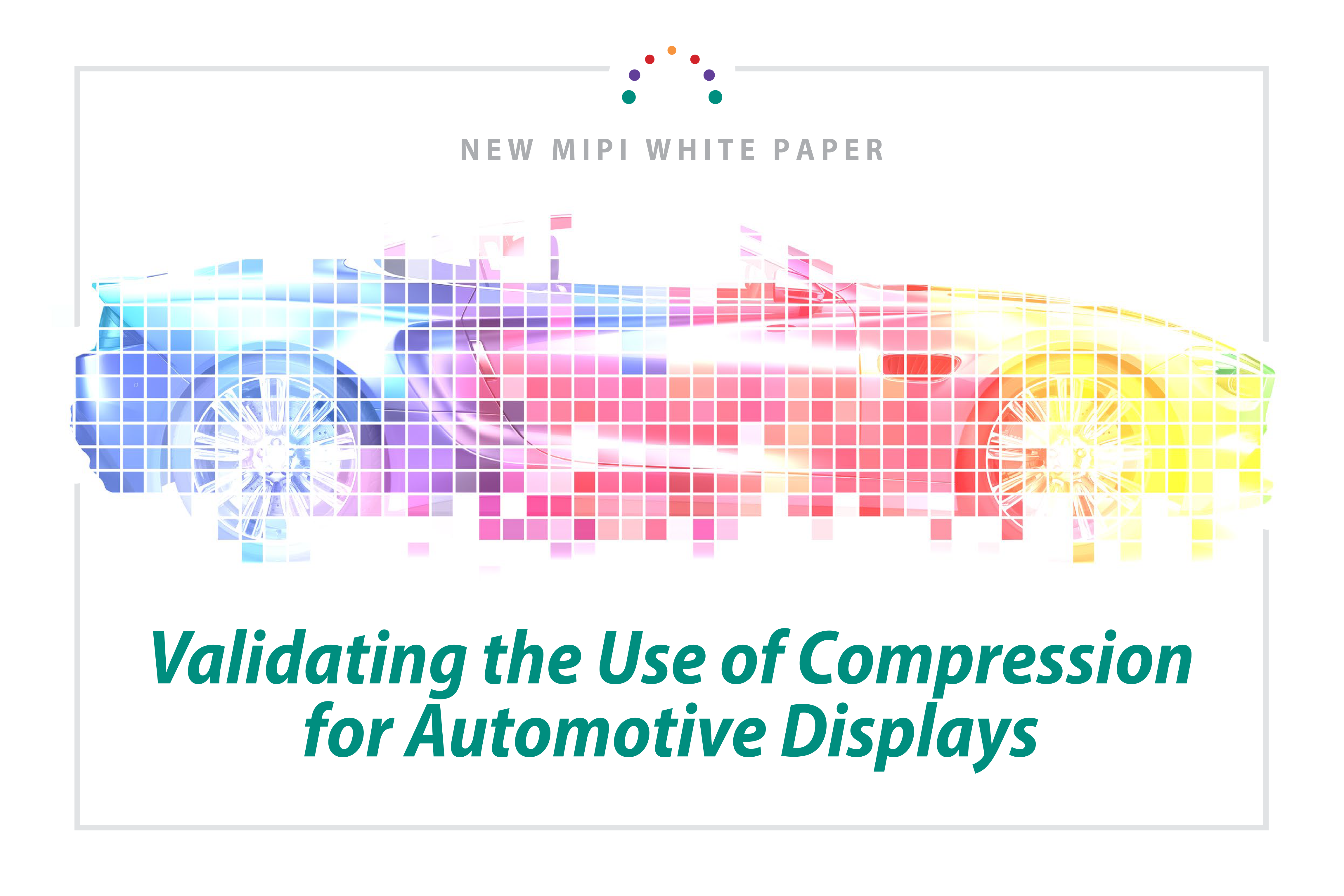2 min read
MIPI Alliance Releases Study Validating the Use of Compression for Automotive Displays
![]() Ian Smith, MIPI Alliance Technical Content Consultant
:
16 March 2021
Ian Smith, MIPI Alliance Technical Content Consultant
:
16 March 2021

- News & Events
- News
- Blog
Automotive display requirements are evolving rapidly as trends in connectivity, automation, sharing and electrification demand that automakers incorporate a growing number of larger and higher-resolution displays inside their vehicles. The use of visually lossless image compression will be essential to meet the bandwidth demands of these in-vehicle automotive displays and to ensure display connectivity solutions meet the stringent safety, reliability, power, weight and electromagnetic compatibility requirements demanded by the automotive industry.
A new MIPI Alliance white paper, “Validating the Use of Compression for Automotive Displays” details the trends impacting automotive display design and describes the results of a recent MIPI study that verifies how use of the Video Electronics Standards Association Display Compression-M (VDC-M) standard within the MIPI Display Serial Interface 2 (DSI-2SM) protocol provides visually lossless compression for automotive displays.
Importance of lossless compression
The latest version of the MIPI DSI-2 display protocol integrates the VDC-M visually lossless image compression standard, which achieves a maximum compression ratio of 6:1, reducing a 24-bit uncompressed source RGB pixel to 4-bits per pixel when compressed.
This image compression can be leveraged by automotive designers to connect high-resolution displays with lower-bandwidth physical interfaces using lower-cost cables and connectors, or to connect the highest-possible resolution displays that require data rates that far exceed the underlying bandwidth of the physical interface. Because the automotive cable harness is one of the most expensive and heaviest components within a vehicle, the use of image data compression technologies also can help reduce the complexity of this component.
However, safety-critical in-vehicle display applications demand that the use of a high data compression rate will not adversely affect image quality and transmission latency. In 2020, the MIPI Display Working Group conducted an image compression study, using representative automotive display images commissioned by MIPI Alliance, for a visually lossless compression analysis of the VDC-M image compression standard.
Compression study results
Undertaken for the benefit of automotive display architects who wish to evaluate MIPI DSI-2 and the visually lossless properties of the VDC-M image compression standard, the study described in the white paper used a set of customized automotive-specific images to accurately represent the in-cabin display content for next-generation vehicles, and then tested those images to evaluate the VDC-M visually lossless compression algorithm using a test process inspired by the ISO/IEC 29170-2 standard.
The study concluded that all the customized automotive images compressed using the VDC-M image compression standard met the objective of being visually lossless, as summarized in the following figure.

Figure 1: Summary of MIPI automotive image compression study results
This white paper may be used by automotive system architects as an example to develop their own VDC-M quality evaluations using their own specific test material.
Editor's note: A supporting presentation titled “MASS: Automotive Displays Using VDC-M Visually Lossless Compression” was presented at the MIPI DevCon 2020 event held last October.
View the presentation and recording »
Acknowledgments: MIPI Alliance would like to extend special thanks to the members of the MIPI Display Working Group for contributing their time, energy and knowledge to this project.






